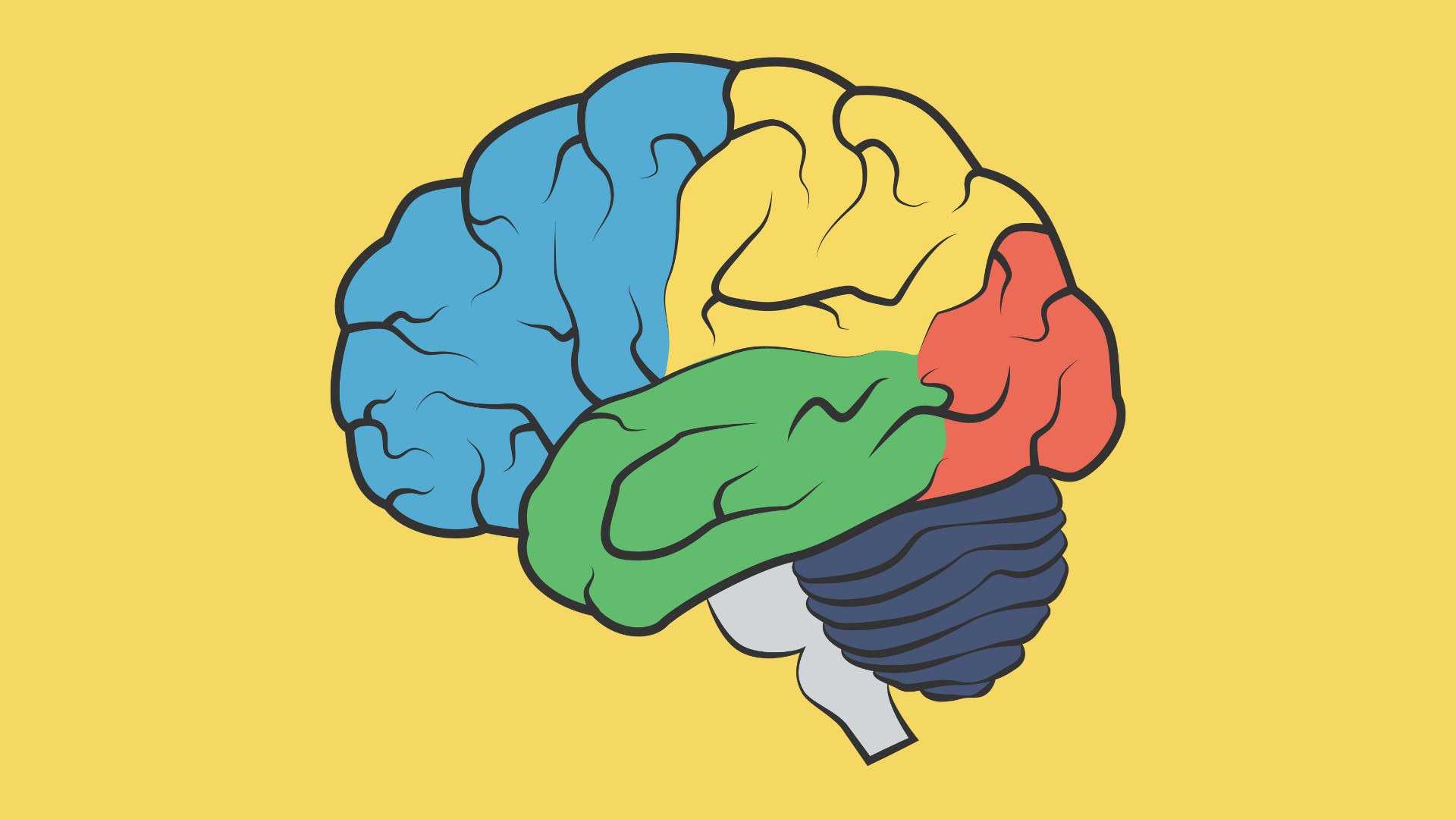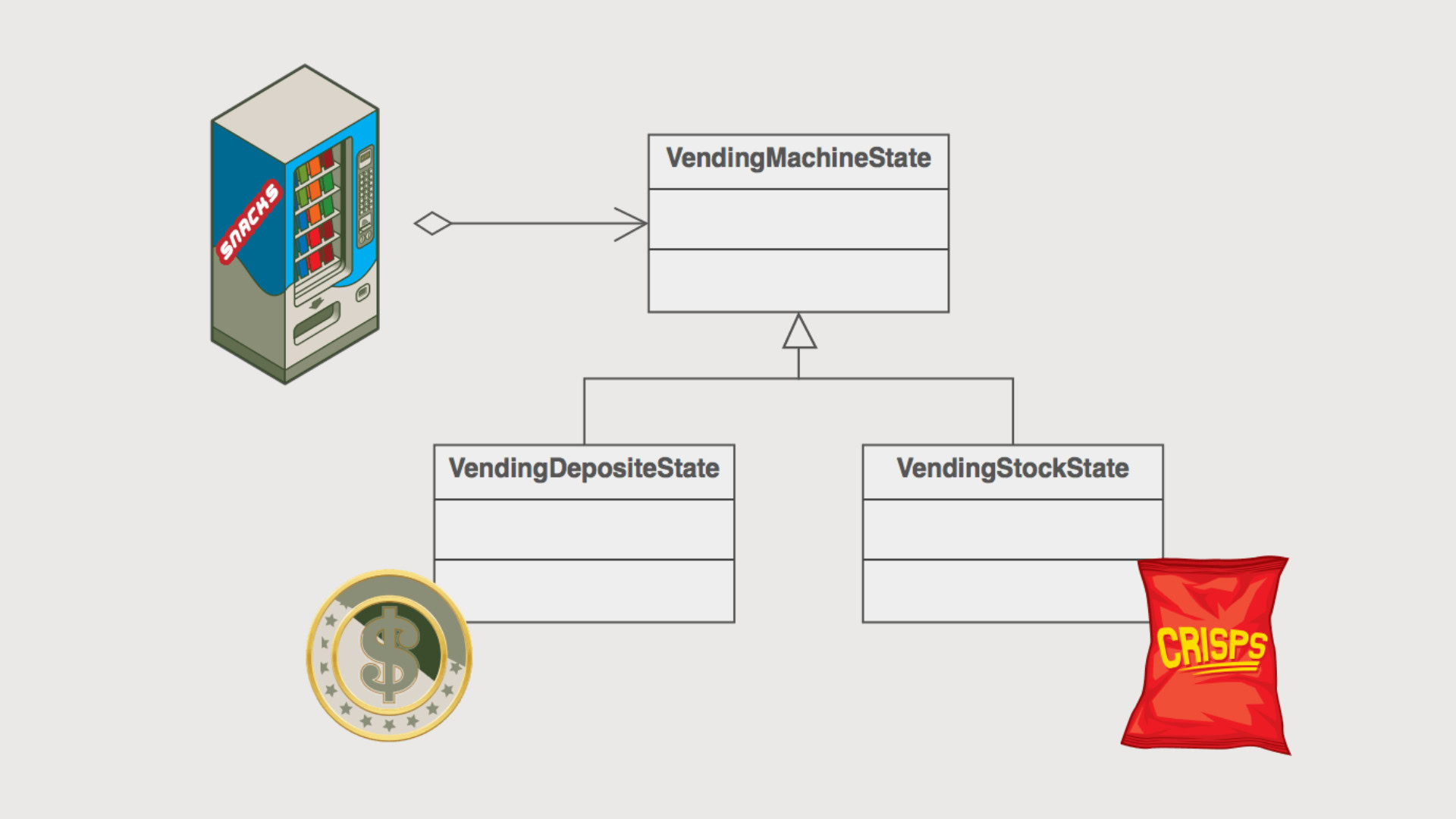
State Pattern: The Key to Seamless and Predictable User Experiences
Every digital experience we engage with daily, whether checking messages, streaming music, or shopping online, hinges on one crucial factor: how it feels to use. Some applications flow effortlessly; every tap responds instantly, animations feel natural, and feedback arrives exactly when expected. Others falter: buttons freeze, screens flicker, or actions get lost in limbo. The difference between these experiences isn’t just in aesthetics; it lies in the invisible architecture behind them.
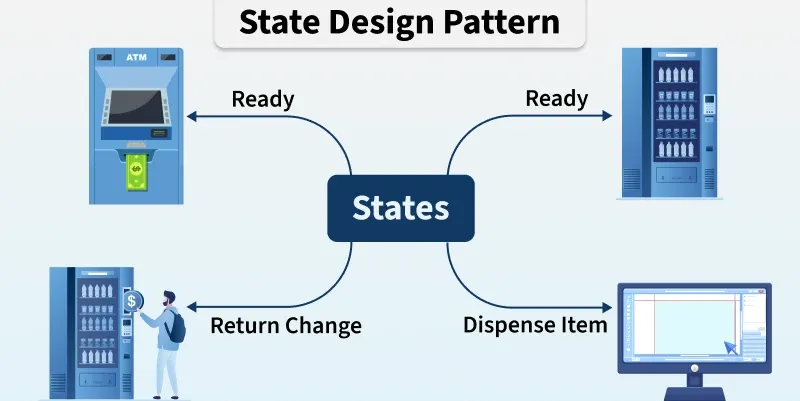
At the heart of this architecture often lies the State Pattern, a powerful design pattern that provides a structured foundation for managing complex user interactions. It allows an object to alter its behavior when its internal state changes, making applications behave consistently and predictably. The State Pattern manages how an object’s behavior depends on its current state, ensuring that the object’s responses and actions are appropriate for its condition at any given time. In this article, we’ll explore what the State Pattern is, why it’s vital for creating smooth user experiences, how it prevents common UX pitfalls, and how designers and developers can use it to build more reliable, intuitive digital products.
Table of Contents
Introduction to Design Patterns
In software development, design patterns are like time-tested blueprints for solving recurring problems. They offer developers a structured approach to building systems that are easier to maintain, extend, and scale. Among these, the state design pattern stands out as a behavioral design pattern that addresses explicitly how an object can change its behavior when its internal state changes.
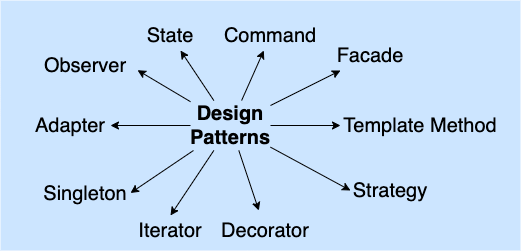
The core idea is simple: when an object’s behavior depends on its internal state, and that state can change over time, the state design pattern provides a clean way to manage those changes. Instead of scattering logic throughout the codebase or relying on tangled conditional statements, this pattern allows an object to change its behavior dynamically as its state changes. This approach not only makes the codebase more organized but also ensures that the system’s behavior remains predictable and easy to reason about as it evolves.
By using design patterns like the state pattern, developers can create robust systems that handle state changes gracefully, leading to software that feels more reliable and intuitive for users.
Understanding the State Pattern
The state pattern can be understood by imagining your application as a living system that changes its behavior depending on its current situation. This design pattern organizes these behavioral changes into distinct, manageable states, allowing the system to respond appropriately without descending into chaos.
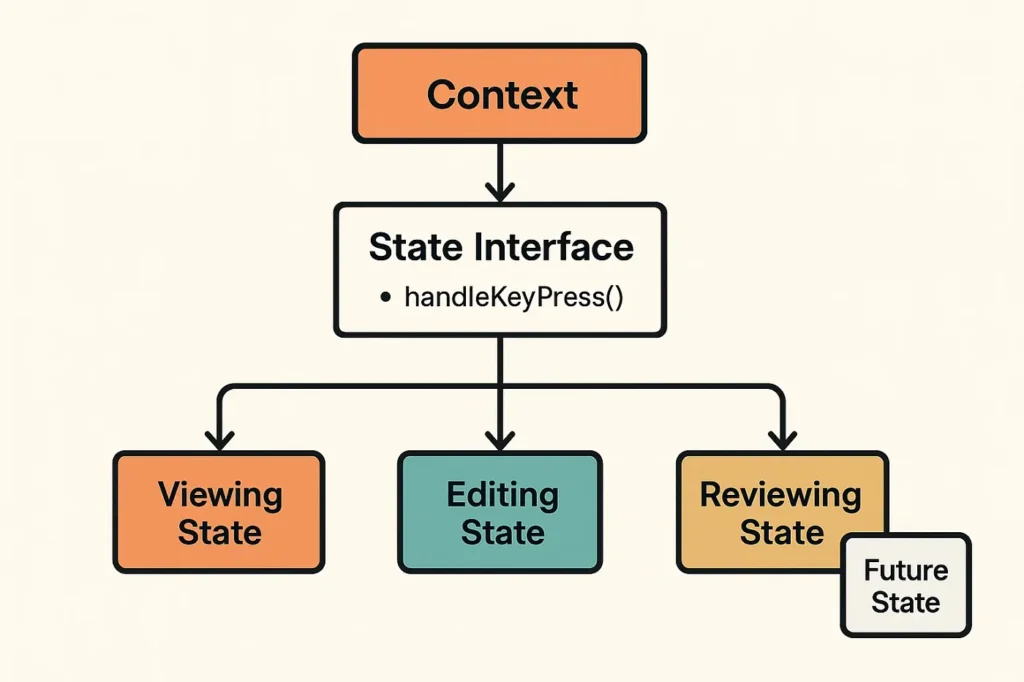
Technically, the State Pattern allows an object to alter its behavior when its internal state changes. Instead of relying on sprawling conditional statements like if-else or switch blocks to determine what should happen next, the application delegates that behavior to individual state objects. Each state object encapsulates the behavior associated with a particular state of the system, and these classes define specific methods for each state.
Consider a simple media player as an example. It can exist in three states: playing, paused, or stopped. This is a classic example of a finite state machine, where the player transitions between a limited set of predefined states. At any given moment, the player is in one state, and transitions between these states are managed accordingly. Each state has its own rules. For instance, when the player is paused and the user hits play, the system transitions seamlessly to the playing state and updates the interface accordingly. When the user hits stop, the player triggers a clean transition to the stopped state, reflecting exactly what the user expects.
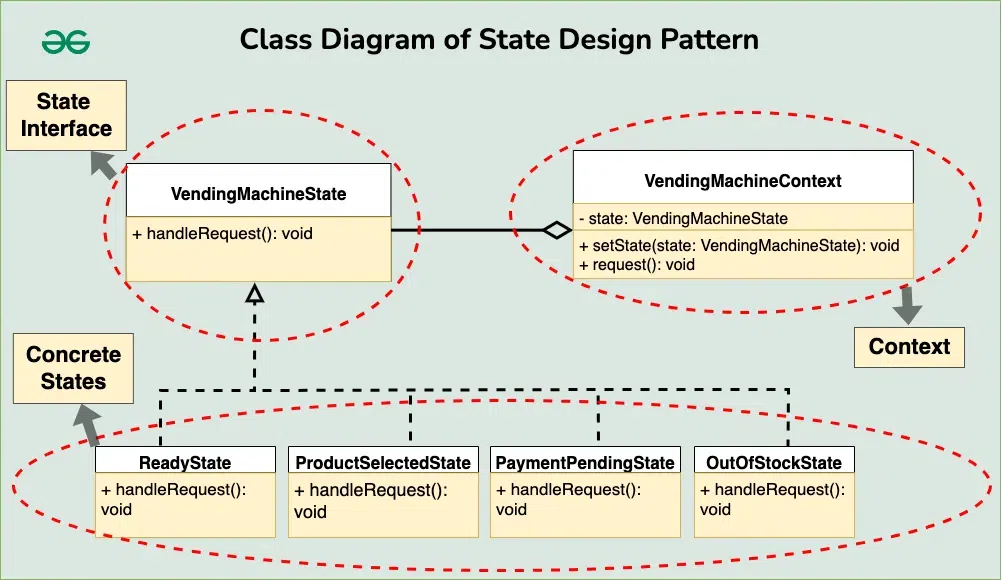
This approach keeps the code elegant and maintainable. Instead of a massive block of conditional rules trying to handle every situation, each concrete state class manages its own logic and knows how to transition to the next state. The state pattern is typically implemented using these state classes. This separation of responsibilities simplifies implementation and makes the user experience more predictable. The context class maintains a reference to the current state object, representing the state of the context, and delegates behavior to it, allowing the system to manage state changes cleanly at run time.
Finite state machines are commonly used to model systems with a limited set of states and transitions, providing a clear and maintainable structure for managing state-dependent behavior.
Real-World Analogy
To better understand the state design pattern, imagine a vending machine, a classic example of how objects can behave differently depending on their current state. A vending machine can exist in several states, such as “ReadyState,” “ProductSelectedState,” or “OutOfStockState.” Each of these states determines how the machine responds to user input.
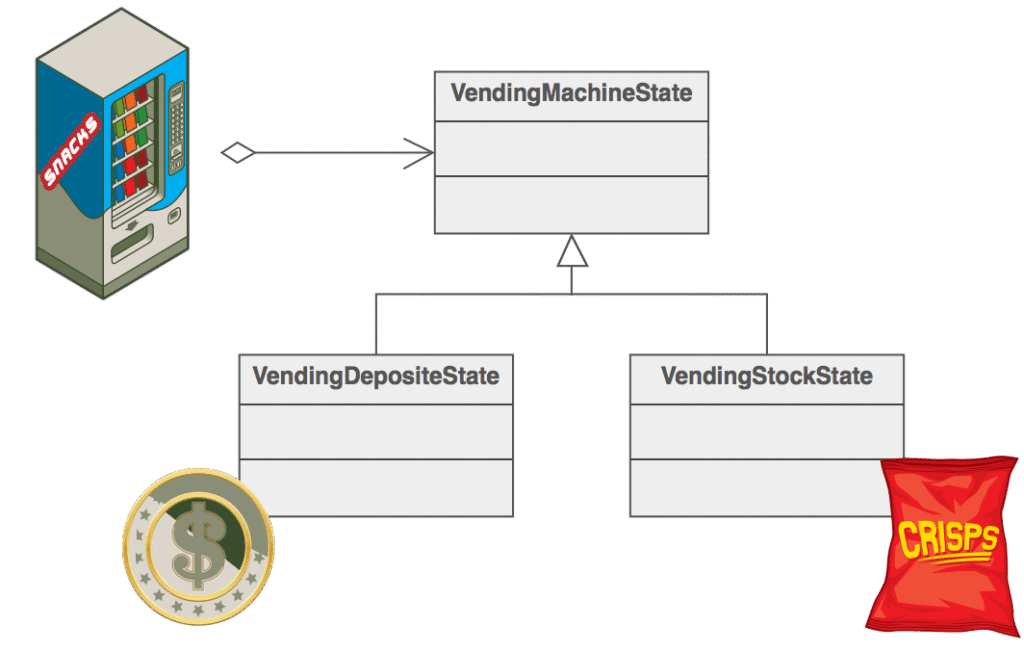
For instance, when the vending machine is in the “ReadyState,” it’s waiting for the user to make a selection. The machine accepts coins and allows the user to choose a product. Once a product is selected, the machine transitions to the “ProductSelectedState,” where it processes payment and dispenses the item. If the selected product is unavailable, the machine might enter an “OutOfStockState,” where it informs the user and prevents further selection until restocked.
This analogy highlights how the state design pattern enables objects to manage complex, state-dependent behavior. The vending machine’s actions: accepting coins, dispensing products, or displaying messages, are all determined by its current state. By modeling these behaviors as separate states, the pattern keeps the system organized and responsive, no matter how many states or transitions are involved.
Why the State Pattern Matters for UX
Great user experience (UX) is often associated with visual elements like color schemes, typography, or animations. However, beneath these aesthetics lies a deeper layer of behavior. Predictability and responsiveness are the cornerstones of trust between users and products, and the state design pattern is often what makes this possible.
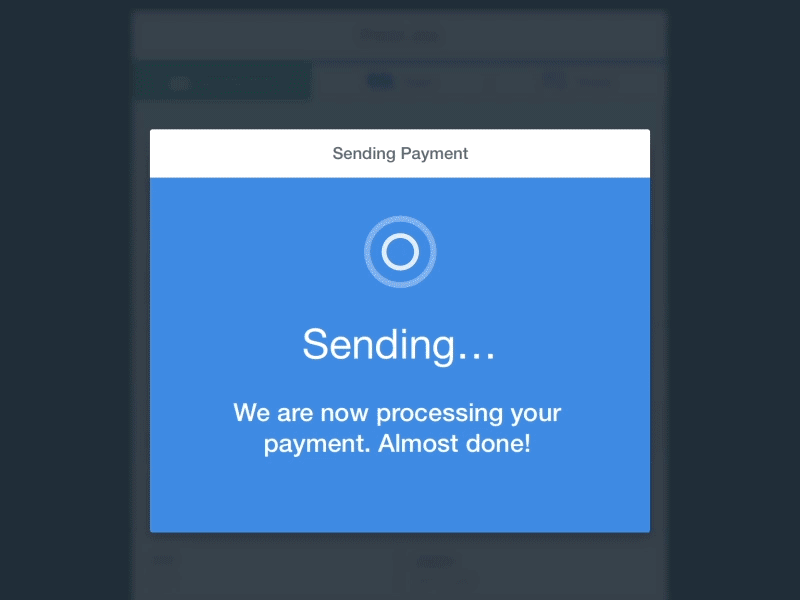
Every time an app responds quickly and logically, it’s usually because its state transitions are well-defined. For example, a Send button that transforms into “Loading” and then “Sent” reassures the user that the action is progressing as expected. Forms that instantly react to errors or upload progress bars that accurately reflect activity make the system feel alive and dependable.
Users rarely consciously recognize the state pattern at work, but they certainly feel it. That intuitive sense of flow, where everything just makes sense, is a direct result of the system’s behavior when its internal state changes. By implementing the state pattern, developers ensure that the object’s behavior depends on the current state object, with each state encapsulating its own state specific behaviors, creating a seamless and trustworthy user experience.
Common Problems Without Proper State Management
Without proper management of states, user experience can quickly deteriorate. Applications relying heavily on complex conditional logic often suffer from issues such as buttons being clicked multiple times, leading to duplicate actions or multiple submissions. Pages may reload unnecessarily, breaking the user’s flow. Sometimes, feedback is unclear: a loading indicator might appear but never complete, or success messages flash too quickly to read.
These problems are architectural rather than purely visual. Developers might patch these issues with quick fixes, but over time, these temporary solutions cause deeper instability. Most frustrating UX moments stem not from poor design but from inadequate handling of state changes and transitions. Without a clear system for managing state transitions, even a beautifully designed interface will eventually break down under complexity.
The solution to these issues is to use the state pattern, which organizes and implements behavior based on different states by creating dedicated state classes and delegating responsibilities to them. This approach facilitates state transitions and maintains consistency with a common interface.
Structure of the State Pattern
The state design pattern is built around three essential components: the context class, the state interface, and the concrete state classes.
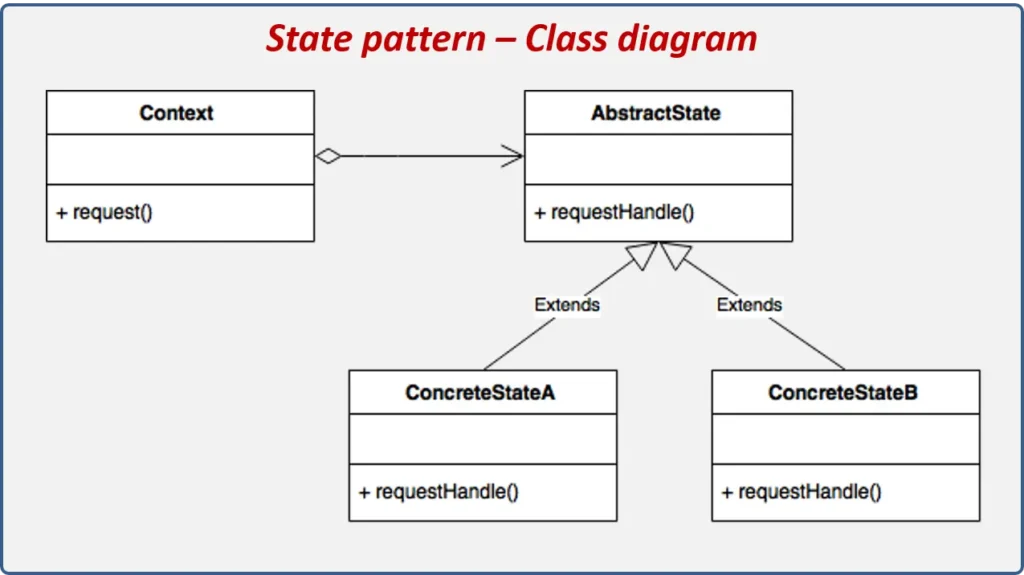
- The context class is the main object whose behavior changes as its internal state changes. It maintains a reference to the current state object and delegates behavior to it.
- The state interface defines the common behavior that all possible states must implement. This ensures that the context class can interact with any state object in a consistent way, regardless of which specific state it’s in.
- The concrete state classes represent the specific states the context object can be in. Each of these classes implements the state interface, providing state specific behavior for that particular situation.
When the context object needs to change its behavior, it simply switches its current state object to a different concrete state class. This design allows the object to change its behavior at runtime without complex conditional logic. Each state class encapsulates the logic for a specific state, making the codebase easier to maintain and extend as new states or behaviors are added.
How the State Pattern Improves User Experience
The State Pattern enhances UX by making behavior predictable, responsive, and consistent. It guarantees that users always understand what’s happening, whether an action is processing, completed, or has failed. Because state transitions are logically defined, the application reacts smoothly, giving a sense of speed and clarity. The pattern also effectively manages transitions and interactions involving multiple states, ensuring that complex scenarios are handled consistently.
Error handling becomes more intuitive as well. Each state class knows exactly how to recover if something goes wrong, guiding the user toward the right outcome instead of leaving them stuck or confused. When an interface behaves consistently across different features, users start to build trust. They learn the product’s behavior, allowing them to navigate faster and more confidently.
In essence, the state design pattern builds trust invisibly by ensuring every response, click, and feedback message feels intentional and coherent.
Practical Examples of the State Pattern in Action
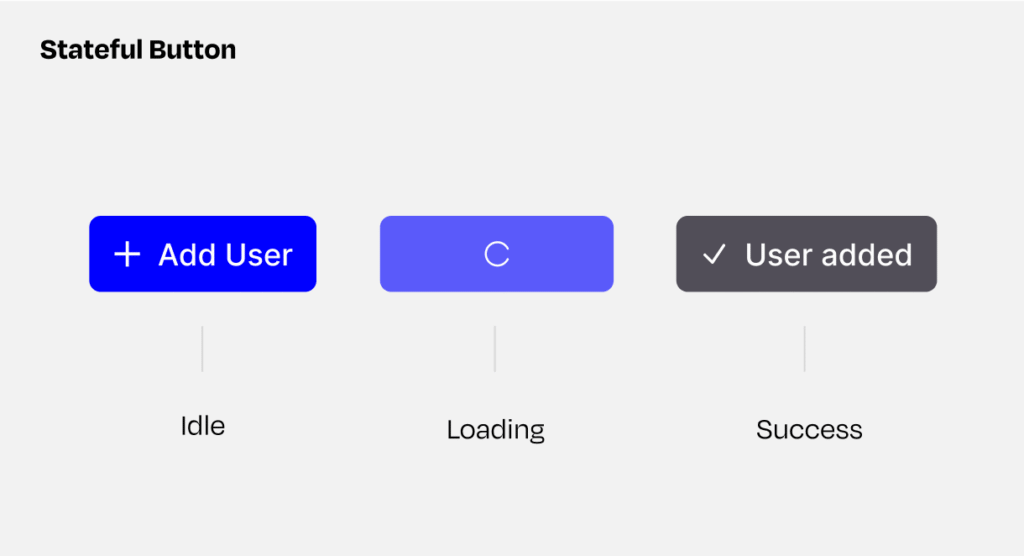
Once familiar with the concept, you’ll notice the state pattern in many everyday applications. For instance, when a webpage displays a skeleton loading screen before content appears, that’s a loading state in action. When submitting a form, the interface might switch from input mode to “processing” and then to “success,” reflecting clean transitions between defined states.
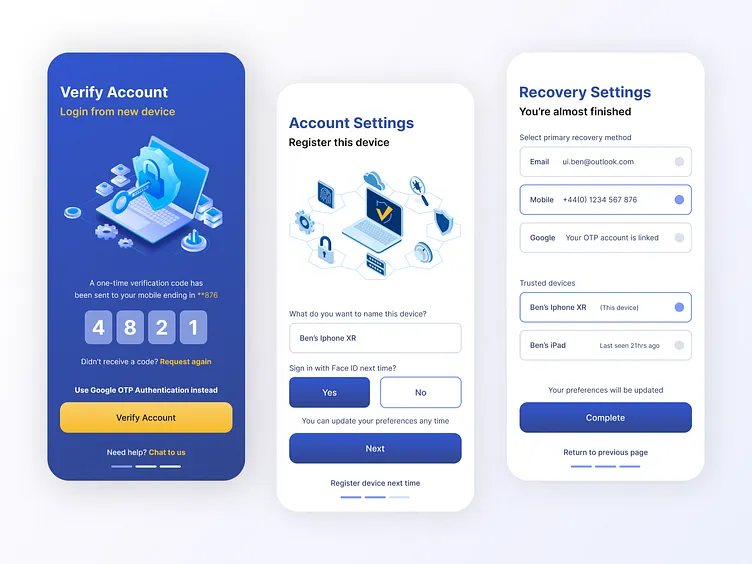
Authentication workflows are classic examples. Logging in involves transitioning from logged out to logging in, then to logged in, or possibly to an error state if credentials fail. Each of these transitions involves assigning a new state to the object to represent the next step in the workflow. Similarly, e-commerce platforms use the state pattern during checkout, moving users from cart review to address confirmation, payment, and finally purchase confirmation. Each transition must feel deliberate and stable, which the state pattern guarantees.
These invisible transitions make modern software feel alive, providing users with a sense of direction and flow, even if they don’t realize what’s happening behind the scenes.
How Designers and Developers Can Collaborate Around States
The true strength of the state pattern emerges when designers and developers collaborate early in the process. Instead of focusing solely on static screens during design reviews, teams should discuss system behavior, what happens when something is loading, succeeds, or fails.

Visual tools like flow diagrams or interactive prototypes help map these state transitions, ensuring that the behavior users experience matches design intentions. Designers define how each state should look and feel, while developers implement the logic driving those states consistently.
This collaboration bridges the gap between design and implementation, eliminating the common disconnect where the final product doesn’t match the mockups. Working from the same behavioral blueprint creates a cohesive product, both visually and functionally.
Building Intuitive UX Through State Awareness
Designing intuitive experiences requires thinking beyond static pages to focus on how users move through different states. Every tap, click, or loading moment represents a transition in the system’s behavior. Prototyping interactions that reflect these transitions helps catch issues early, especially under real-world conditions like slow internet or server delays.
Good UX design anticipates what can go wrong. The best interfaces account for errors, loading times, and interruptions gracefully. This awareness comes from thinking in terms of states. The system’s response to any interaction depends on its existing state at that moment, allowing for more flexible and maintainable user experiences. When you design with this mindset, you’re not just creating screens, you’re designing experiences that breathe.
Best Practices for Implementation
Implementing the state design pattern effectively requires attention to a few best practices:
- Define a clear state interface: Start by outlining a concise state interface that captures the common behavior shared by all states. This makes it easy to add new states or modify existing ones without disrupting the overall system.
- Encapsulate state-specific behavior in separate classes: Each state should be represented by its own class, ensuring that state specific behavior is isolated and easy to manage.
- Use a context class to manage state transitions: The context class should hold a reference to the current state object and delegate behavior to it. This keeps the logic for state transitions centralized and straightforward.
- Avoid complex conditional logic: Instead of using if-else chains or switch statements to handle different states, rely on state objects to encapsulate the unique behavior of each state. This leads to cleaner, more maintainable code.
- Consider hierarchical state machines for complex scenarios: When dealing with systems that have many states or nested state transitions, a hierarchical state machine can help organize and manage complexity, making transitions between states more manageable.
By following these best practices, you ensure that your implementation of the state design pattern remains flexible, scalable, and easy to maintain, even as your application grows and evolves.
Common Pitfalls to Avoid
While the state design pattern is powerful, there are several common pitfalls to watch out for when implementing it:
- Overusing the pattern: Not every situation requires the state pattern. Applying it unnecessarily can introduce complexity without real benefit.
- Unclear or bloated state interfaces: Failing to define a clear and concise state interface can lead to confusion and make the system harder to maintain. Keep the interface focused on the common behavior needed by all states.
- Not encapsulating state-specific behavior: Mixing state specific behavior into the context class or failing to use separate classes for each state can result in tightly coupled code and low cohesion, making future changes difficult.
- Falling back on complex conditional logic: Using if-else statements or switch blocks instead of state objects undermines the benefits of the pattern and can make the codebase harder to understand and maintain.
- Ignoring hierarchical state machines for complex transitions: For systems with many states or intricate state transitions, not considering a hierarchical state machine can lead to inflexible and hard-to-scale solutions.
By being mindful of these pitfalls, you can leverage the state design pattern to its fullest, creating systems that are robust, maintainable, and easy to extend as requirements change.
Conclusion
Behind every effortless digital experience lies a network of carefully managed states. The state design pattern is the invisible force that transforms messy logic into seamless behavior, bridging the gap between technical architecture and human experience. It ensures every user action, from a button press to a full workflow, feels natural and reliable.
When teams design and code with state awareness, they move beyond mere functionality into emotional design. They build confidence, clarity, and flow. Ultimately, this is what separates ordinary software from exceptional experiences, the kind that make users feel like everything just works.
Take your company to the next level and get results with our world class user experience, interface design and implementation.
Get a FREE 30 min Strategy Session

Related posts
How Neurodesign Is Reshaping User Experience
Let’s be real, 2025 is wild. We’re bombarded with more information than ever, attention spans are shorter than a TikTok […]
The End of the User Interface? How AI Agents Are Rewriting UX
Could the traditional user interface be disappearing? For decades, digital experiences have revolved around screens, buttons, and menus. But this […]
Design Psychology: 4 Principles that Empower Designers – Part 1
“Designers are psychology scientists with a pen.” You might not know it yet, but you beautiful designer, have an almighty […]
Creative product design that gets results
Take your company to the next level with world class user experience and interface design.
get a free strategy session

